- Home
- George Orwell
All Art Is Propaganda: Critical Essays Page 10
All Art Is Propaganda: Critical Essays Read online
Page 10
All literature of this kind is partly plagiarism. Sexton Blake, for instance, started off quite frankly as an imitation of Sherlock Holmes, and still resembles him fairly strongly; he has hawklike features, lives in Baker Street, smokes enormously and puts on a dressing-gown when he wants to think. The Gem and Magnet probably owe something to the school story writers who were flourishing when they began, Gunby Hadath,3 Desmond Coke4 and the rest, but they owe more to nineteenth-century models. In so far as Greyfriars and St. Jim's are like real schools at all, they are much more like Tom Brown's Rugby than a modern public school. Neither school has an O.T.C.,5 for instance, games are not compulsory, and the boys are even allowed to wear what clothes they like. But without doubt the main origin of these papers is Stalky & Co. This book has had an immense influence on boys' literature, and it is one of those books which have a sort of traditional reputation among people who have never even seen a copy of it. More than once in boys' weekly papers I have come across a reference to Stalky & Co. in which the word was spelt "Storky." Even the name of the chief comic among the Greyfriars masters, Mr. Prout, is taken from Stalky & Co., and so is much of the slang; "jape," "merry," "giddy," "bizney" (business), "frabjous," "don't" for "doesn't"--all of them out of date even when Gem and Magnet started. There are also traces of earlier origins. The name "Greyfriars" is probably taken from Thackeray, and Gosling, the school porter in the Magnet, talks in an imitation of Dickens's dialect.
With all this, the supposed "glamour" of public-school life is played for all it is worth. There is all the usual paraphernalia--lock-up, roll-call, house matches, fagging, prefects, cosy teas round the study fire, etc. etc.--and constant reference to the "old school," the "old grey stones" (both schools were founded in the early sixteenth century), the "team spirit" of the "Greyfriars men." As for the snob-appeal, it is completely shameless. Each school has a titled boy or two whose titles are constantly thrust in the reader's face; other boys have the names of well-known aristocratic families, Talbot, Manners, Lowther. We are for ever being reminded that Gussy is the Honourable Arthur A. D'Arcy, son of Lord Eastwood, that Jack Blake is heir to "broad acres," that Hurree Jamset Ram Singh (nicknamed Inky) is the Nabob of Bhanipur, that Vernon-Smith's father is a millionaire. Till recently the illustrations in both papers always depicted the boys in clothes imitated from those of Eton; in the last few years Greyfriars has changed over to blazers and flannel trousers, but St. Jim's still sticks to the Eton jacket, and Gussy sticks to his top-hat. In the school magazine which appears every week as part of the Magnet, Harry Wharton writes an article discussing the pocket-money received by the "fellows in the Remove," and reveals that some of them get as much as five pounds a week! This kind of thing is a perfectly deliberate incitement to wealth-fantasy. And here it is worth noticing a rather curious fact, and that is that the school story is a thing peculiar to England. So far as I know, there are extremely few school stories in foreign languages. The reason, obviously, is that in England education is mainly a matter of status. The most definite dividing-line between the petite-bourgeoisie and the working class is that the former pay for their education, and within the bourgeoisie there is another unbridgeable gulf between the "public" school and the "private" school. It is quite clear that there are tens and scores of thousands of people to whom every detail of life at a "posh" public school is wildly thrilling and romantic. They happen to be outside that mystic world of quadrangles and house-colours, but they yearn after it, daydream about it, live mentally in it for hours at a stretch. The question is, Who are these people? Who reads the Gem and Magnet?
Obviously one can never be quite certain about this kind of thing. All I can say from my own observation is this. Boys who are likely to go to public schools themselves generally read the Gem and Magnet, but they nearly always stop reading them when they are about twelve; they may continue for another year from force of habit, but by that time they have ceased to take them seriously. On the other hand, the boys at very cheap private schools, the schools that are designed for people who can't afford a public school but consider the Council schools "common," continue reading the Gem and Magnet for several years longer. A few years ago I was a teacher at two of these schools myself. I found that not only did virtually all the boys read the Gem and Magnet, but that they were still taking them fairly seriously when they were fifteen or even sixteen. These boys were the sons of shopkeepers, office employees and small business and professional men, and obviously it is this class that the Gem and Magnet are aimed at. But they are certainly read by working-class boys as well. They are generally on sale in the poorest quarters of big towns, and I have known them to be read by boys whom one might expect to be completely immune from public-school "glamour." I have seen a young coal-miner, for instance, a lad who had already worked a year or two underground, eagerly reading the Gem. Recently I offered a batch of English papers to some British legionaries of the French Foreign Legion in North Africa; they picked out the Gem and Magnet first. Both papers are much read by girls,* and the Pen Pals department of the Gem shows that it is read in every corner of the British Empire, by Australians, Canadians, Palestine Jews, Malays, Arabs, Straits Chinese, etc. etc. The editors evidently expect their readers to be aged round about fourteen, and the advertisements (milk chocolate, postage stamps, water pistols, blushing cured, home conjuring tricks, itching powder, the Phine Phun Ring which runs a needle into your friend's hand, etc. etc.) indicate roughly the same age; there are also the Admiralty advertisements, however, which call for youths between seventeen and twenty-two. And there is no question that these papers are also read by adults. It is quite common for people to write to the editor and say that they have read every number of the Gem or Magnet for the past thirty years. Here, for instance, is a letter from a lady in Salisbury:
* There are several corresponding girls' papers. The Schoolgirl is a companion-paper to the Magnet and has stories by "Hilda Richards." The characters are interchangeable to some extent. Bessie Bunter, Billy Bunter's sister, figures in the Schoolgirl [Orwell's footnote].6
I can say of your splendid yarns of Harry Wharton & Co., of Greyfriars, that they never fail to reach a high standard. Without doubt they are the finest stories of their type on the market to-day, which is saying a good deal. They seem to bring you face to face with Nature. I have taken the Magnet from the start, and have followed the adventures of Harry Wharton & Co. with rapt interest. I have no sons, but two daughters, and there's always a rush to be the first to read the grand old paper. My husband, too, was a staunch reader of the Magnet until he was suddenly taken away from us.
It is well worth getting hold of some copies of the Gem and Magnet, especially the Gem, simply to have a look at the correspondence columns. What is truly startling is the intense interest with which the pettiest details of life at Greyfriars and St. Jim's are followed up. Here, for instance, are a few of the questions sent in by readers:
"What age is Dick Roylance?" "How old is St. Jim's?" "Can you give me a list of the Shell and their studies?" "How much did D'Arcy's monocle cost?" "How is it fellows like Crooke are in the Shell and decent fellows like yourself are only in the Fourth?" "What are the Form captain's three chief duties?" "Who is the chemistry master at St. Jim's?" (From a girl) "Where is St. Jim's situated? Could you tell me how to get there, as I would love to see the building? Are you boys just 'phoneys,' as I think you are?"
It is clear that many of the boys and girls who write these letters are living a complete fantasy-life. Sometimes a boy will write, for instance, giving his age, height, weight, chest and bicep measurements and asking which member of the Shell or Fourth Form he most exactly resembles. The demand for a list of the studies on the Shell passage, with an exact account of who lives in each, is a very common one. The editors, of course, do everything in their power to keep up the illusion. In the Gem Jack Blake is supposed to write the answers to correspondents, and in the Magnet a couple of pages is always given up to the school magazine (the Greyfriars Herald
, edited by Harry Wharton), and there is another page in which one or other character is written up each week. The stories run in cycles, two or three characters being kept in the foreground for several weeks at a time. First there will be a series of rollicking adventure stories, featuring the Famous Five and Billy Bunter; then a run of stories turning on mistaken identity, with Wibley (the make-up wizard) in the star part; then a run of more serious stories in which Vernon-Smith is trembling on the verge of expulsion. And here one comes upon the real secret of the Gem and Magnet and the probable reason why they continue to be read in spite of their obvious out-of-dateness.
It is that the characters are so carefully graded as to give almost every type of reader a character he can identify himself with. Most boys' papers aim at doing this, hence the boy-assistant (Sexton Blake's Tinker, Nelson Lee's Nipper, etc.) who usually accompanies the explorer, detective or what-not on his adventures. But in these cases there is only one boy, and usually it is much the same type of boy. In the Gem and Magnet there is a model for very nearly everybody. There is the normal, athletic, high-spirited boy (Tom Merry, Jack Blake, Frank Nugent), a slightly rowdier version of this type (Bob Cherry), a more aristocratic version (Talbot, Manners), a quieter, more serious version (Harry Wharton), and a stolid, "bulldog" version ( Johnny Bull). Then there is the reckless, dare-devil type of boy (Vernon-Smith), the definitely "clever," studious boy (Mark Linley, Dick Penfold), and the eccentric boy who is not good at games but possesses some special talent (Skinner, Wibley). And there is the scholarship-boy (Tom Redwing), an important figure in this class of story because he makes it possible for boys from very poor homes to project themselves into the public-school atmosphere. In addition there are Australian, Irish, Welsh, Manx, Yorkshire and Lancashire boys to play upon local patriotism. But the subtlety of characterisation goes deeper than this. If one studies the correspondence columns one sees that there is probably no character in the Gem and Magnet whom some or other reader does not identify with, except the out-and-out comics, Coker, Billy Bunter, Fisher T. Fish (the money-grubbing American boy) and, of course, the masters. Bunter, though in his origin he probably owed something to the fat boy in Pickwick, is a real creation. His tight trousers against which boots and canes are constantly thudding, his astuteness in search of food, his postal order which never turns up, have made him famous wherever the Union Jack waves. But he is not a subject for daydreams. On the other hand, another seeming figure of fun, Gussy (the Honourable Arthur A. D'Arcy, "the swell of St. Jim's"), is evidently much admired. Like everything else in the Gem and Magnet, Gussy is at least thirty years out of date. He is the "knut" of the early twentieth century or even the "masher" of the 'nineties ("Bai Jove, deah boy!" and "Weally, I shall be obliged to give you a feahful thwashin'!"), the monocled idiot who made good on the fields of Mons and Le Cateau.7 And his evident popularity goes to show how deep the snob-appeal of this type is. English people are extremely fond of the titled ass (cf. Lord Peter Wimsey) who always turns up trumps in the moment of emergency. Here is a letter from one of Gussy's girl admirers:
I think you're too hard on Gussy. I wonder he's still in existence, the way you treat him. He's my hero. Did you know I write lyrics? How's this--to the tune of "Goody Goody"?
Gonna get my gas-mask, join the A. R. P.
'Cos I'm wise to all those bombs you drop on me.
Gonna dig myself a trench
Inside the garden fence;
Gonna seal my windows up with tin
So that the tear gas can't get in;
Gonna park my cannon right outside the kerb
With a note to Adolf Hitler: "Don't disturb!"
And if I never fall in Nazi hands
That's soon enough for me
Gonna get my gas-mask, join the A. R. P.8
P.S.--Do you get on well with girls?
I quote this in full because (dated April 1939) it is interesting as being probably the earliest mention of Hitler in the Gem. In the Gem there is also a heroic fat boy, Fatty Wynn, as a set-off against Bunter. Vernon-Smith, "the Bounder of the Remove," a Byronic character, always on the verge of the sack, is another great favourite. And even some of the cads probably have their following. Loder, for instance, "the rotter of the Sixth," is a cad, but he is also a highbrow and given to saying sarcastic things about football and the team spirit. The boys of the Remove only think him all the more of a cad for this, but a certain type of boy would probably identify with him. Even Racke, Crooke and Co. are probably admired by small boys who think it diabolically wicked to smoke cigarettes. (A frequent question in the correspondence column: "What brand of cigarettes does Racke smoke?")
Naturally the politics of the Gem and Magnet are Conservative, but in a completely pre-1914 style, with no Fascist tinge. In reality their basic political assumptions are two: nothing ever changes, and foreigners are funny. In the Gem of 1939 Frenchmen are still Froggies and Italians are still Dagoes. Mossoo, the French master at Greyfriars, is the usual comic-paper Frog, with pointed beard, peg-top trousers, etc. Inky, the Indian boy, though a rajah, and therefore possessing snob-appeal, is also the comic babu of the Punch tradition. ("'The rowfulness is not the proper caper, my esteemed Bob,' said Inky. 'Let dogs delight in the barkfulness and bitefulness, but the soft answer is the cracked pitcher that goes longest to a bird in the bush, as the English proverb remarks.'") Fisher T. Fish is the old-style stage Yankee ("'Waal, I guess,'" etc.) dating from a period of Anglo-American jealousy. Wun Lung, the Chinese boy (he has rather faded out of late, no doubt because some of the Magnets readers are Straits Chinese), is the nineteenth-century pantomime Chinaman, with saucer-shaped hat, pigtail and pidgin-English. The assumption all along is not only that foreigners are comics who are put there for us to laugh at, but that they can be classified in much the same way as insects. That is why in all boys' papers, not only the Gem and Magnet, a Chinese is invariably portrayed with a pigtail. It is the thing you recognise him by, like the Frenchman's beard or the Italian's barrel-organ. In papers of this kind it occasionally happens that when the setting of a story is in a foreign country some attempt is made to describe the natives as individual human beings, but as a rule it is assumed that foreigners of any one race are all alike and will conform more or less exactly to the following patterns:
FRENCHMAN: Excitable. Wears beard, gesticulates wildly.
SPANIARD, MEXICAN, etc.: Sinister, treacherous.
ARAB, AFGHAN, etc.: Sinister, treacherous.
CHINESE: Sinister, treacherous. Wears pigtail.
ITALIAN: Excitable. Grinds barrel-organ or carries stiletto.
SWEDE, DANE, etc.: Kind hearted, stupid.
NEGRO: Comic, very faithful.
The working classes only enter into the Gem and Magnet as comics or semi-villains (race-course touts, etc.). As for class-friction, trade unionism, strikes, slumps, unemployment, Fascism and civil war--not a mention. Somewhere or other in the thirty years' issue of the two papers you might perhaps find the word "Socialism," but you would have to look a long time for it. If the Russian Revolution is anywhere referred to, it will be indirectly, in the word "Bolshy" (meaning a person of violent disagreeable habits). Hitler and the Nazis are just beginning to make their appearance, in the sort of reference I quoted above. The war-crisis of September 1938 made just enough impression to produce a story in which Mr. Vernon-Smith, the Bounder's millionaire father, cashed in on the general panic by buying up country houses in order to sell them to "crisis scuttlers." But that is probably as near to noticing the European situation as the Gem and Magnet will come, until the war actually starts.* That does not mean that these papers are unpatriotic--quite the contrary! Throughout the Great War the Gem and Magnet were perhaps the most consistently and cheerfully patriotic papers in England. Almost every week the boys caught a spy or pushed a conchy into the army, and during the rationing period "eat less bread" was printed in large type on every page. But their patriotism has nothing whatever to do with power-politics or "ideological" warfar
e. It is more akin to family loyalty, and actually it gives one a valuable clue to the attitude of ordinary people, especially the huge untouched block of the middle class and the better-off working class. These people are patriotic to the middle of their bones, but they do not feel that what happens in foreign countries is any of their business. When England is in danger they rally to its defence as a matter of course, but in between-times they are not interested. After all, England is always in the right and England always wins, so why worry? It is an attitude that has been shaken during the past twenty years, but not so deeply as is sometimes supposed. Failure to understand it is one of the reasons why left-wing political parties are seldom able to produce an acceptable foreign policy.
The mental world of the Gem and Magnet, therefore, is something like this:
The year is 1910--or 1940, but it is all the same. You are at Greyfriars, a rosy-cheeked boy of fourteen in posh tailor-made clothes, sitting down to tea in your study on the Remove passage after an exciting game of football which was won by an odd goal in the last half-minute. There is a cosy fire in the study, and outside the wind is whistling. The ivy clusters thickly round the old grey stones. The King is on his throne and the pound is worth a pound. Over in Europe the comic foreigners are jabbering and gesticulating, but the grim grey battleships of the British Fleet are steaming up the Channel and at the outposts of Empire the monocled Englishmen are holding the niggers at bay. Lord Mauleverer has just got another fiver and we are all settling down to a tremendous tea of sausages, sardines, crumpets, potted meat, jam and doughnuts. After tea we shall sit round the study fire having a good laugh at Billy Bunter and discussing the team for next week's match against Rookwood. Everything is safe, solid and unquestionable. Everything will be the same for ever and ever. That approximately is the atmosphere.

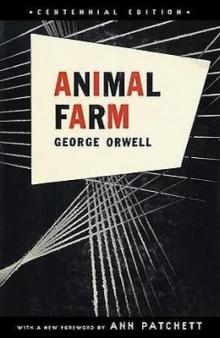 Animal Farm & 1984
Animal Farm & 1984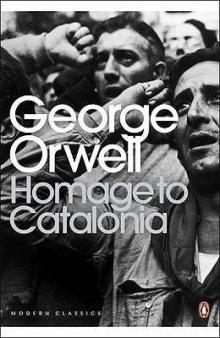 Homage to Catalonia
Homage to Catalonia Decline of the English Murder
Decline of the English Murder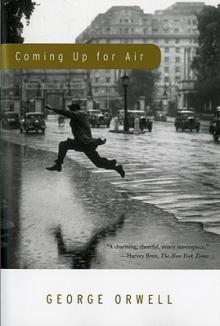 Coming Up for Air
Coming Up for Air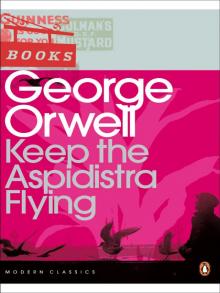 Keep the Aspidistra Flying
Keep the Aspidistra Flying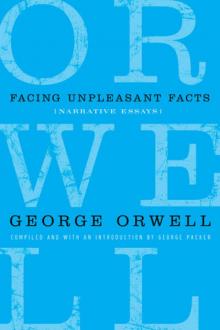 Facing Unpleasant Facts: Narrative Essays
Facing Unpleasant Facts: Narrative Essays The Complete Novels of George Orwell
The Complete Novels of George Orwell All Art Is Propaganda: Critical Essays
All Art Is Propaganda: Critical Essays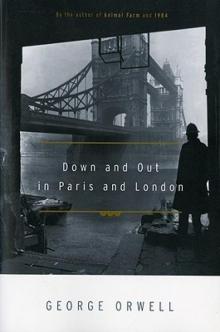 Down and Out in Paris and London
Down and Out in Paris and London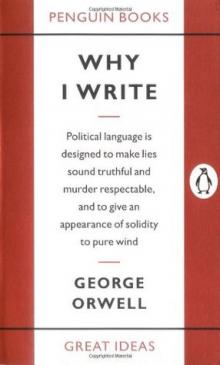 Why I Write
Why I Write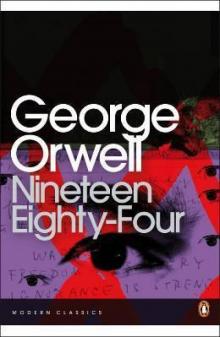 Nineteen Eighty-Four
Nineteen Eighty-Four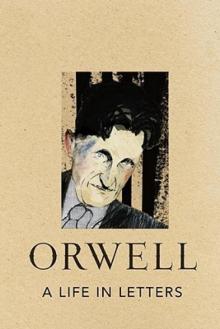 A Life in Letters
A Life in Letters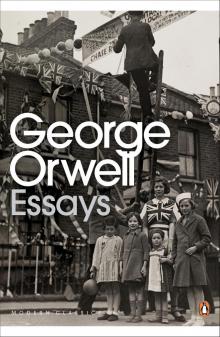 Essays
Essays A Clergyman's Daughter
A Clergyman's Daughter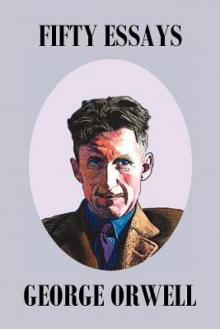 Fifty Orwell Essays
Fifty Orwell Essays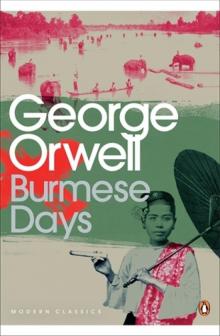 Burmese Days
Burmese Days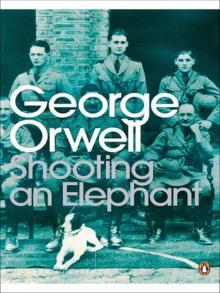 Shooting an Elephant
Shooting an Elephant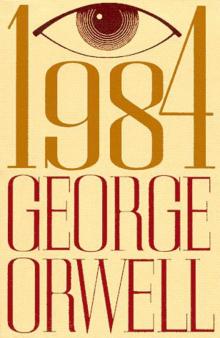 1984 (Penguin)
1984 (Penguin)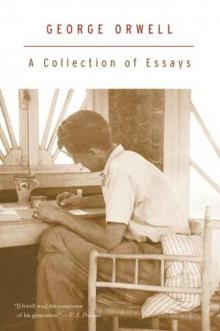 A Collection of Essays
A Collection of Essays 1984
1984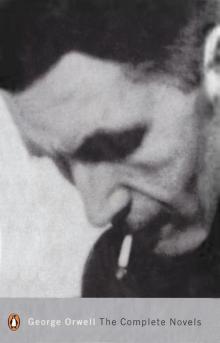 The Complete Novels
The Complete Novels All Art Is Propaganda
All Art Is Propaganda Orwell in Spain
Orwell in Spain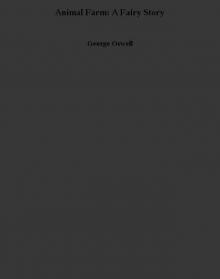 Animal Farm: A Fairy Story
Animal Farm: A Fairy Story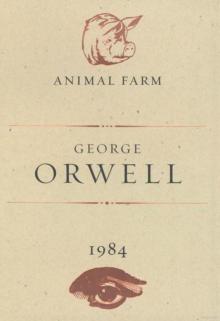 Animal Farm and 1984
Animal Farm and 1984